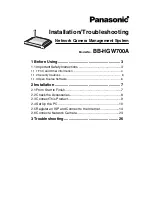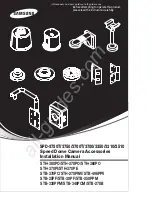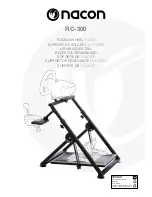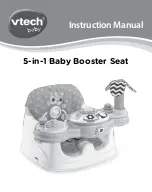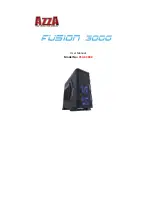
ICD-P520/P530F
2
1. GENERAL
.................................................................. 3
2. DISASSEMBLY
2-1. Case
(Front)
Assy
............................................................ 4
2-2. Main
Board
..................................................................... 5
2-3. USB Board (P520), USB/FM Board (P530F) ................ 5
3. TEST
MODE
............................................................. 6
4. DIAGRAMS
4-1. Block
Diagram
................................................................ 9
4-2. Printed Wiring Board – MAIN Section – ....................... 11
4-3. Schematic Diagram – MAIN Board (1/2) – .................... 12
4-4. Schematic Diagram – MAIN Board (2/2) – .................... 13
4-5. Printed
Wiring
Board
– USB/FM Section (ICD-P530F) – ................................ 14
4-6. Printed Wiring Board – USB Section (ICD-P520) – ...... 15
4-7. Schematic
Diagram
– USB/FM Section (ICD-P530F) – ................................ 16
4-8. Schematic Diagram – USB Section (ICD-P520) – ......... 16
5. EXPLODED
VIEWS
5-1. Case (Front) Section ....................................................... 19
5-2. Case (Rear) Section ........................................................ 20
6.
ELECTRICAL PARTS LIST
................................. 21
TABLE OF CONTENTS
UNLEADED SOLDER
Boards requiring use of unleaded solder are printed with the lead-
free mark (LF) indicating the solder contains no lead.
(Caution: Some printed circuit boards may not come printed with
the lead free mark due to their particular size)
: LEAD FREE MARK
Unleaded solder has the following characteristics.
• Unleaded solder melts at a temperature about 40 °C higher
than ordinary solder.
Ordinary soldering irons can be used but the iron tip has to be
applied to the solder joint for a slightly longer time.
Soldering irons using a temperature regulator should be set to
about 350 °C.
Caution: The printed pattern (copper foil) may peel away if the
heated tip is applied for too long, so be careful!
• Strong viscosity
Unleaded solder is more viscou-s (sticky, less prone to fl ow)
than ordinary solder so use caution not to let solder bridges
occur such as on IC pins, etc.
• Usable with ordinary solder
It is best to use only unleaded solder but unleaded solder may
also be added to ordinary solder.
Notes on chip component replacement
• Never reuse a disconnected chip component.
• Notice that the minus side of a tantalum capacitor may be dam-
aged by heat.
Flexible Circuit Board Repairing
• Keep the temperature of soldering iron around 270 °C during
repairing.
• Do not touch the soldering iron on the same conductor of the
circuit board (within 3 times).
• Be careful not to apply force on the conductor when soldering
or unsoldering.
Содержание ICD-P530F - Ic Recorder
Страница 25: ...MEMO ICD P520 P530F 25 ...

























